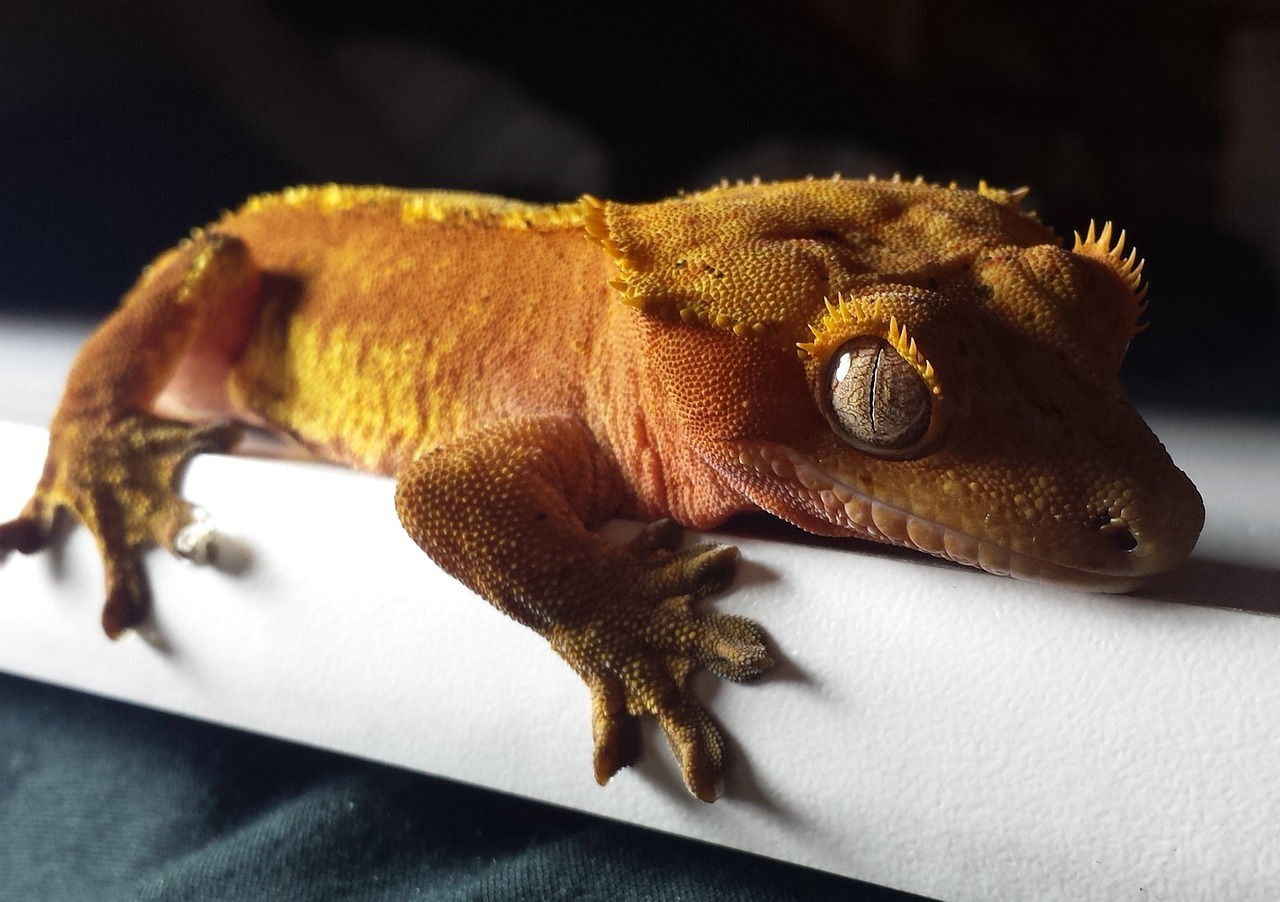The Crested Gecko, also known as Eyelash Gecko, is a gecko species endemic to southern New Caledonia, a group of islands near Australia. This gecko is famous for its long “eyelashes,” which are actually spines that run from its eyes to the tail. As nocturnal animals, Crested Geckos do not require any special lighting, making them a relatively low-maintenance pet. They are well-suited for novice lizard owners who have limited time to devote to their pets. If you are excited to know more about this beautiful gecko, make sure to read further!
History
Back in the day, Crested Geckos were deemed to be extinct, until they were “rediscovered” in 1994. From there and then, they rose to popularity as lizard pets in the pet trade. The species was first described in New Caledonia by French zoologist Alphone Guichenot in 1866. The species is now grouped in the genus Rhacodactylus, which comprises “giant” geckos found in New Caledonia.
Despite being prolific in the pet trade, the population of Crested Geckos in the wild is Vulnerable, according to the International Union for the Conservation of Nature (IUCN) Red List.
Characteristics of a Crested Gecko
Average size: 7 to 9 inches, including the tail
Average life span: 10 to 20 years
One of the most notable features of the Crested Gecko is its eyelashes or hair-like projections above its eyes. It has two rows of spines that travel from the sides of its wedged-shaped head down to the tail’s base. It does not have eyelids. Thus, it relies on its tongue to moisten and clean its eyes. The tip of its prehensile tail and toes are covered in little hairs called setae, each of which contains hundreds of smaller strands of hair called spatulae, which help the Crested Gecko climb concrete surfaces. Its tail can be dropped as a deterrent or bluff to predators.
Crested Geckos come in various colors, mainly a mix of brown, gray, orange, red, and yellow hues. They possess three color morphs in the wild: white-fringed, tiger, and pattern-less.
Crested Geckos are not too big nor small, hardy, shy, and docile, which makes them excellent lizard pets. Though some tend to be a bit skittish, they are usually tolerant of gentle handling. Unlike most geckos, they cannot regenerate their tails.
Caring for a Crested Gecko
An ordinary juvenile Crested Gecko is commonly available for less than $50. Adults are slightly expensive, but males are cheaper.
Compared to most geckos in the pet trade, Crested Geckos are relatively easier to care for. An individual needs a 20-gallon enclosure at a minimum, but a larger cage would be better. Keep in mind that Crested Geckos are arboreal, active, and would require lots of vertical space for climbing, so opt for a vertical, tall tank. Two to three Crested Geckos can be housed in a 29-gallon enclosure, but make sure to only keep one male in the enclosure. Males are territorial, and housing two or more may lead to aggressive, bloody disputes.
As climbers, they would need various high-quality branches, cork bark, bamboo, vines, and driftwood designed in various heights and orientations. Add visual elements such as sturdy, live plants like pothos, dracaena, and ficus for them to use as cover. Substrates such as coconut fiber bedding, peat, or moss are great options for they can help retain humidity.
You have to remove uneaten food and spot clean the enclosure regularly. Clean the whole enclosure and the decorations once a month so that germs, bacteria, and viruses may not thrive.
They don’t need special UVB lighting, but professionals suggest keeping a low-level UVB lighting to maintain your pet’s health. Make sure to provide a hideaway so your pet can hide if they do not like the light. As for the humidity level, keep it at 60% at day and 80% at night. Use a hygrometer to measure humidity levels.
When it comes to their diet, Crested Geckos usually accept crickets and insects such as waxworms, roaches, and silkworms. Avoid giving mealworms because their exoskeletons are hard and may cause indigestion. Make sure that the insects are gut-loaded or fed with nutritious foods before feeding them to your gecko. Dust the insects with calcium or vitamin D3 powder supplement to boost your gecko’s nutrient intake. Serve fruits such as pears, passion fruits, papayas, and bananas as treats several times a week.
